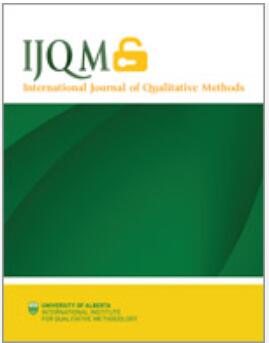Screenshotting What’s Important in Video Data: An Experiment in Collaborative, Subjective Analysis of Artifactual, Cultural Research with Children
IF 3.8
2区 社会学
Q1 SOCIAL SCIENCES, INTERDISCIPLINARY
引用次数: 0
Abstract
When using video and visual methods in qualitative and post-qualitative research, the size and scale of the data set can be overwhelming, particularly for new researchers. Collaborative research teams often work with a code book to systematize and unify their analyses. Interpretive researchers pursuing multi-layered and multi-voiced visual analysis often find it difficult to move away from desires for a single ‘best’ interpretation of what happened. This paper illustrates and interrogates an open and flexible method for ‘thinning’ (screenshotting) video data that we call the ‘Five Images Method’. We offer one unfolding of interpretive processes and tensions and examine how four researchers worked across positionalities to analyse video data. We start with our positionalities in relation to a research study of children creating photographic and written stories of cultural artifacts, carried out over one year. The primary data from the study was generated through online video-conference sessions connecting a university researcher with an elementary class. A second level of data was created through a process of screenshotting, followed by recursive cycles of conversation about the choices of each researcher, and how they were guided by background, geography, roles in relation to child participants, technologies, personal experiences, and so on. Two key incidents that illustrate the potential of the method and the interpretations produced are described. We argue that reducing video data in this way can be both generative and limiting, while also serving as a catalyst for enhanced analysis. The collaborations and relationships built in research teams through slow processes of analysis (and writing!) working across difference also promote evocative and layered learning. Looking at interpretations as multiple can be hampered by longstanding histories of research as intended to produce authentic and singular truths.在视频数据中什么是重要的:一个与儿童一起进行人工文化研究的协作、主观分析的实验
当在定性和后定性研究中使用视频和视觉方法时,数据集的大小和规模可能是压倒性的,特别是对于新的研究人员。协作研究团队经常使用代码书来系统化和统一他们的分析。追求多层次和多声音视觉分析的解释研究人员经常发现很难摆脱对所发生事情的单一“最佳”解释的渴望。本文阐述并探讨了一种开放而灵活的“细化”(截屏)视频数据的方法,我们称之为“五图像法”。我们提供了一个解释过程和紧张关系的展开,并检查了四位研究人员如何跨职位分析视频数据。我们从我们在一项关于儿童创作文化文物的摄影和书面故事的研究中所处的位置开始,这项研究进行了一年多。该研究的主要数据是通过将大学研究人员与小学班级联系起来的在线视频会议产生的。第二个层次的数据是通过截图过程创建的,然后是关于每个研究人员的选择的递归循环对话,以及他们如何受到背景、地理、与儿童参与者有关的角色、技术、个人经验等的指导。描述了说明该方法的潜力和产生的解释的两个关键事件。我们认为,以这种方式减少视频数据既可以生成又可以限制,同时也可以作为增强分析的催化剂。通过缓慢的分析过程(和写作!)在研究团队中建立的合作和关系也促进了唤起和分层学习。将解释视为多重可能会受到长期研究历史的阻碍,因为研究的目的是产生真实而单一的事实。
本文章由计算机程序翻译,如有差异,请以英文原文为准。
求助全文
约1分钟内获得全文
求助全文
来源期刊

International Journal of Qualitative Methods
SOCIAL SCIENCES, INTERDISCIPLINARY-
CiteScore
6.90
自引率
11.10%
发文量
139
审稿时长
12 weeks
期刊介绍:
Journal Highlights
Impact Factor: 5.4 Ranked 5/110 in Social Sciences, Interdisciplinary – SSCI
Indexed In: Clarivate Analytics: Social Science Citation Index, the Directory of Open Access Journals (DOAJ), and Scopus
Launched In: 2002
Publication is subject to payment of an article processing charge (APC)
Submit here
International Journal of Qualitative Methods (IJQM) is a peer-reviewed open access journal which focuses on methodological advances, innovations, and insights in qualitative or mixed methods studies. Please see the Aims and Scope tab for further information.
 求助内容:
求助内容: 应助结果提醒方式:
应助结果提醒方式:


